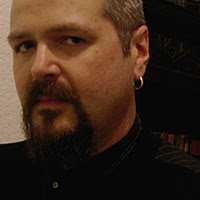Fiske channels this into television as medium, in that the usage of camera angle, costume, dialogue, etc., has a "complexity and subtlety" that "has a powerful effect on the audience" (1095).
The episode of "Sex and the City" supports Barker, both in the sense of socio-cultural activity (the activities in which the characters engage) and of television viewer understanding (cutting to another setting to indicate passage of time or change of character focus). It also agrees with Fiske, in that makers of modern television know their formulae. The women in the show bolster their relationships in a common setting, an indiscriminate eatery, both as a "neutral" location and as a "reset" button for the viewer. The eatery is where the characters--and the viewer--gather their thoughts until the next, constrasting scene, often in a bedroom.
The mannerisms of each character are subtle indications of mood: a woman's hand wipes away a cup stain on a table, and wipes away her past and relationship at the same time. Her new boyfriend stripping her floor and repairing her home suggests a similar internal cleansing.
This episode, despite the straightforward, open conversation between women regarding sex--a departure from earlier texts in that sex is openly discussed and that women discuss it--yet holds to a societal discomfort with sex. Scenes with openly-discussed sexual conversation also contain the highest level of humor, as if jokes are meant to disarm the subject, to relax the viewer's sense of cultural intrusion. Gag after gag (no pun intended, considering the subject of fellatio) appears during the "gossip" scenes in the neutral eatery location.
Music also plays a part in suggesting a cultural paradigm. The interstitial music for Sex and the City is salsa music, chosen perhaps to convey celebration and hedonism. The use of "cha-cha" is also used, perhaps to indicate the social back-and-forth, the urban dance, in which the characters participate.
As a side note, my eyebrow raised a bit at the main character's internal musing: I always thought that the right brain (controlling the left hand) was the emotional side, the artistic side. The left controls the logical side. The episode's script, however, like the character herself, might have confused itself on this point.
Works Cited:
Barker, Chris. Cultural Studies: Theory and Practice.
Fiske, John. "Television Culture." (Posted on WebCT)

No comments:
Post a Comment